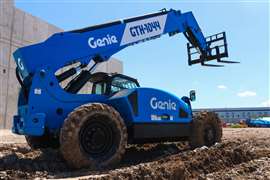Why telematics could be the most important item in your toolkit
Partner Content produced by KHL Content Studio
04 November 2025
SPONSORED CONTENT
The balancing act that is running a construction business may never have been more precarious.
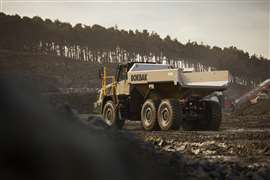 Telematics systems have the potential to significantly increase hauler productivity
Telematics systems have the potential to significantly increase hauler productivity
The need to complete projects on time and on budget, while keeping costs down, is key to maintaining margins.
At the same time, to drive the business forward and win more bids, productivity must increase – while emissions must not.
Whether you’re running large fleets or just one or two machines, it’s vital that downtime is kept to a minimum and every piece of equipment is as close as possible to hitting optimal productivity.
The technology takeaway
While there’s a general recognition that technology can help, there is too often a tendency to see it as something that simply ‘comes with the machine’.
In fact, when integrated technology such as telematics is embraced and fully utilised, the difference it can make could be the difference between a profitable project and a painful strain on the business.
A true believer in the power of telematics is Graeme Blake, a product manager with Rokbak in Motherwell, Scotland, a Volvo CE-owned company that produces articulated haulers.
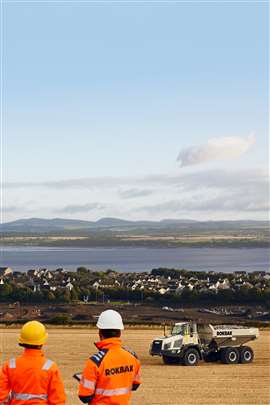 Rokbak’s RA30 hauler undergoes testing with a heavy load
Rokbak’s RA30 hauler undergoes testing with a heavy load
After 11 years with the manufacturer, first as an apprentice and then as part of the testing team, Blake understands how important productive equipment is to heavy construction and quarrying customers. With this in mind, he feels telematics should be better understood by businesses who want to maximise machine usage.
“With telematics systems,” he says, “contractors can monitor everything that’s going on with their equipment, be it haulers, dozers, excavators or some combination of machines.
“These systems will send live data to relevant team members, with updates on machine hours worked, engine speed and idle time, fuel consumed, machine location and much more.
In basic terms, Blake says the telematics system “tells you what the machine is doing, how efficiently it’s working and whether it’s healthy or heading for trouble.
“If you’ve paid a large sum of money for, say, a machine, you’ll want to know where it is and what it’s doing – basically, is it making money or costing money.
“Without telematics, you have no easy way to monitor key metrics, such as fuel consumption, daily payload and machine location.”
Up and running
Blake goes on to explain why planned downtime is so much more beneficial from a cost perspective than unexpected downtime.
“When a machine goes down unexpectedly,” he says, “everything stops – other machines in the earthmoving chain, along with their operators and very likely other people and machines ready to take material offsite. The sort of delays we’re talking about could be extremely costly.
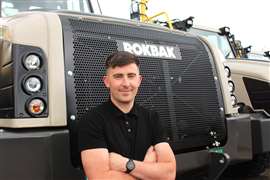 Rokbak product manager Graeme Blake
Rokbak product manager Graeme Blake
“Telematics systems can flag for planned services or maintenance but also alert both operators and back-office staff to system faults, which could signal a need for unscheduled maintenance or repair work.”
Some telematics systems, including Rokbak’s own Haul Track, address the issue of unplanned downtime with live diagnostics. If oil pressure drops or coolant temperature rises, an automatic alert is sent by email or through the web portal.
The operator and the manager see the fault almost instantly. Blake says. “A code such as low oil pressure appears along with a severity level, timestamp and recommended checks. That shortens the time between the fault and the fix.”
By building a performance history for each machine, systems like Haul Track can also flag gradual deterioration – which may be a shift in temperature patterns or an unusual rise in fuel use – before a critical failure occurs.
In this way, predictive maintenance replaces unscheduled repairs.
Even gaps in operator competence can be picked up via the telematic information, which can highlight specific areas of operation that require improvement.
When a plan comes together
Blake divides the benefits of telematics into two clear areas: productivity and cost control. With movement and payload data available, site managers can analyse haul routes, identify bottlenecks and ensure the right machines are in the right place at the right time.
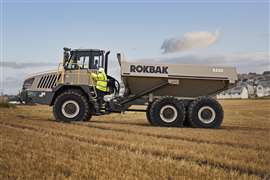 A modern hauler requires a combination of quality engineering and advanced technology
A modern hauler requires a combination of quality engineering and advanced technology
“You can spot wasted movement, waiting time and idle queues,” says Blake, “which helps in planning routes, adjusting shift patterns and making the best use of each truck.”
He explains that, from a hauler perspective, telematics systems are ideal for keeping track of how many tonnes of material are being moved.
“And data can be tailored,” he adds, “to show you what you need, dependent on the sort of projects or applications you’re working on. So, you might want to know how much fuel is being used per hour – or per day or week – and that information is relayed to the back office in real time.
“If you’re trying to keep the total cost of your operations down, being able to constantly monitor how much fuel your equipment is burning is hugely beneficial.
“And that’s the case, no matter where you are, as you can view all the data on a mobile device. And not only can you keep track of machine productivity and efficiency, but also operator efficiency.”
An eye on performance
This is, in fact, another aspect of telematics, which is often overlooked. Telematics systems allow businesses to set performance benchmarks for, say, fuel efficiency. Targets can be agreed with site managers and operators, with regular feedback being given on performance levels.
In this way, trends can be spotted via regular reviews of the data, helping project managers make better decisions about the deployment of equipment and helping them motivate their teams to continuously improve.
 A Rokbak engineer checks on testing progress for this RA30 hauler
A Rokbak engineer checks on testing progress for this RA30 hauler
Blake sees this only as a positive, saying, “If an operator needs extra training to boost output, that’s something that will quickly be seen on the system and acted on.
Telematics can also help reduce fuel use in other ways. Measuring idle time, acceleration patterns and engine load reveals where energy is being lost.
Adjusting operator practice or scheduling can cut consumption by anything from 5% to 15% across a fleet – which could be the difference between profit and loss on a project.
Always on
Today, most contractors are running mixed fleets, making data integration even more critical. A telematics system that operates with the AEMP 2.0 Telematics Standard could be significantly advantageous, allowing, as it does, for the integration of telematics data from different telematics systems into a unified system.
As Blake says, “Standardisation means you can compare like for like and make decisions across your entire fleet.”
In fact, this is the nub of the matter; while the telematics data is extremely useful, it’s the analysis and review of the data and the way it’s used to manage a fleet that can really make a difference to a construction business.
The fact that fleet managers can see, from wherever they’re located, the current state of every piece of equipment – static, on the move, loaded, unloaded, out of action – is potentially game changing for a construction business.
Add to this the opportunity to maximise uptime via fault alerts and there are significant savings to be made across the fleet.
Blake sees it as “an investment that maximises a customer’s return on their investment.”
And as for the telematics system itself, he is convinced that, in the case of Rokbak’s RA30 and RA40 articulated haulers, it will pay for itself many times over during the life of the machine.
--------
This article was produced by KHL Content Studio in collaboration with experts from Rokbak
--------
All images for the article, courtesy of Rokbak
--------
STAY CONNECTED


Receive the information you need when you need it through our world-leading magazines, newsletters and daily briefings.
CONNECT WITH THE TEAM










